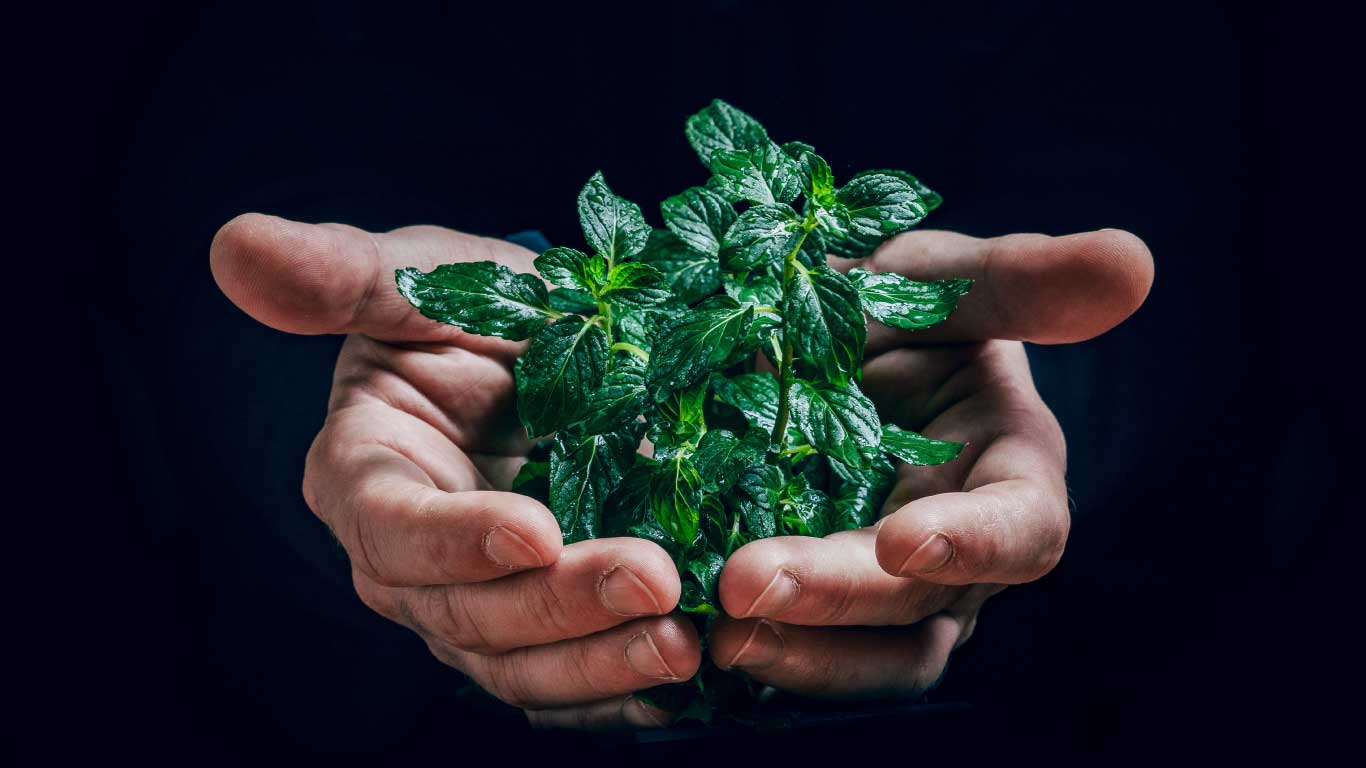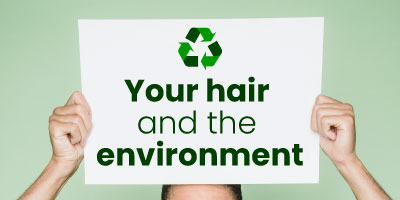Protecting the environment with your hair systems and wigs
Posted by Superhairpieces on 2022 Aug 15th
It may surprise you to know this, but human hair is biodegradable. But at the same time, it can cause damage to the environment if not disposed of properly. In this blog, we will look at both human and synthetic hair, how you can protect the environment by recycling hair in the form of wigs and hair systems, and ways you can further help the world when it comes to the washing of your hairpieces.
Is human hair actually biodegradable?

Yes, human hair is biodegradable. If you’re not sure what that means, when disposed of, hair can be decomposed by microbes such as bacteria or fungi without causing any ecological harm in the process. And yes, this applies to all types of human hair whether you have straight, curly or wavy hair.
However, unlike other tissues, hair can take time to decompose. Hair is made of a protein called keratin which contains no water and is completely insoluble. This helps make it resistant to enzymes trying to break it down which is why human hair can take a while before it’s fully decomposed.
What can speed or delay this decomposition is the environment where the hair is disposed of. Factors such as soil, moisture, chemicals and whether animals are in the area can affect the rate of decomposition. Generally, it can take a few years for hair to fully decompose. However, if the hair is in a dry and arid environment, it can be preserved much longer since microbes don’t thrive in those types of conditions.
Is disposed hair not bad for the environment?
While human hair is biodegradable, that doesn’t mean it won’t have any harmful effects to the environment. That’s because it depends on how and where you dispose of the hair. Remember we mentioned that hair breaks down into three components? One of those components is nitrogen which can cause air as well as water pollution, the latter of which can affect the general supply of water.
Let’s not forget that millions of pounds of hair end up in landfills every year. It can create dust when broken down which can be harmful if inhaled. Hair disposed in plastic bags can also produce methane, a potent greenhouse gas which can contribute to climate change due to increased warming. There’s also the issue of your pipes and drains getting clogged with hair, especially when existing deposits or trapped items start to combine with the hair.
Instead of throwing your hair down the drain or in the trash, a better option is to put it in your green bin. Green bins are mainly used for grass and other biodegradable waste to reduce the amount of waste shipped to landfills. It can then be recycled into compost which overall, is much better for the environment as well as providing a second use for the hair which we’ll look into later in this blog.
We’ve mainly spoken of human hair, it’s also important to keep synthetic hair in mind. At Superhairpieces, we only sell 100% human hairpieces while we offer synthetic options for grey hair.
However, many wearers tend to go for fully synthetic toupees and wigs as well. Synthetic hair is made of fibers and chemicals designed to mimic human hair. Some of these include vinyl, PVC, polyester, acrylic, and polyethylene to name a few. This not only means that synthetic hair is not biodegradable, but since some of the chemicals used to create it contain plastic, it can cause serious environmental damage. That is why it is all the more important to dispose of synthetic hair correctly. You can do this in a few ways such as disposing of it at a waste recycling center, or using a zero-waste box which is ideal for materials that are difficult to recycle.
How you can recycle and reuse human hair

There are other ways to recycle human hair as well. The most obvious one, especially if you have a lot of hair, is to donate it so that it can be repurposed for toupees, hair toppers, wigs and hair extensions. Even a small amount, if accepted, can go a long way! You’re not only preventing damage to the environment, but are also helping out a number of men and women who are dealing with hair loss and are looking to reclaim their hair.
Remember we mentioned how green bins can recycle hair and other biodegradable waste into compost? You can also reuse hair as a cost-effective way to make your own compost. Hair also decomposes inside soil and can act as a fertilizer. The nitrogen traces created when it's broken down are also said to improve the quality of the soil as well as being vital for plants in general, which makes it a great hair disposal option for plant lovers.
Believe it or not, hair is also great for birds. Birds use all sorts of materials such as twigs, sticks and grass clippings to create nests for their eggs. Human hair is said to be one of their favorites as well. Leaving your human hair in outdoor areas which birds have access to will all but ensure the creation of a new nest.
How else can you help the environment with your hair?

We’ve looked at disposing and recycling hair, but there is one other way you can help the environment regardless if you’re wearing a hairpiece or not — how you wash your hair. There’s no better feeling than washing your hair in a hot shower. However, this comes at a big cost.
According to The Conversation, a daily routine of shampooing twice along with a conditioner consumes over 14,000 liters of water annually. With hot water being used, this also means 1252kWh of energy being used up along with a carbon footprint of 500kg of carbon dioxide equivalents. The use of a regular or wig shampoo can also contribute to air pollution. As per the US Environmental Protection Agency, 25% of fossil-based air pollution comes from chemical products such as perfumes, cosmetics and hair products like shampoos.
Instead, if you simply shampooed twice a week and opted for a leave-in conditioner, you would use just over 600 liters of water, 55 kWh of energy and produce a carbon footprint of 25kg of carbon dioxide equivalents. Not to mention, save on your hydro and water bills.
Excessive shampoo use is already not recommended for regular human hair, and it is even more so the case for hair replacement systems that don’t have the natural oils of the scalp to replenish the hair. Overshampooing can cause wigs and hair systems to fade, dry out and become damaged. Once or twice a week should more than suffice to keep your hairpiece clean, healthy and shiny.
For more tips on how to shower with a hair system, check out our Expert Talks episode on the topic:
-------------------------------------------
Interested in learning more about non-surgical hair replacement systems? Browse through our website at www.superhairpieces.com (US & International) or superhairpieces.ca (CAN)
Don’t forget to tag us at @Superhairpieces and #Superhairpieces on your social media channels to get a shoutout! And make sure to like us on Facebook, follow on Instagram and subscribe to our YouTube channel!
 Likes
Likes










